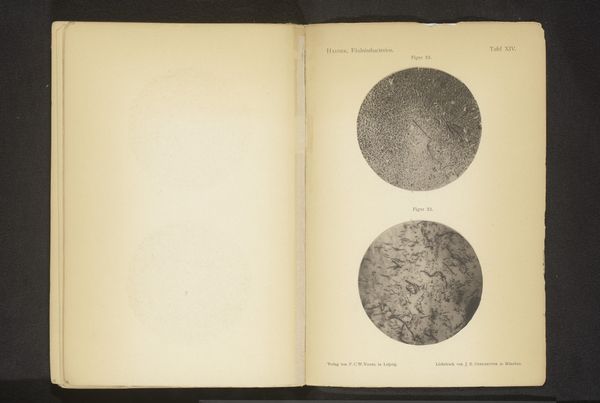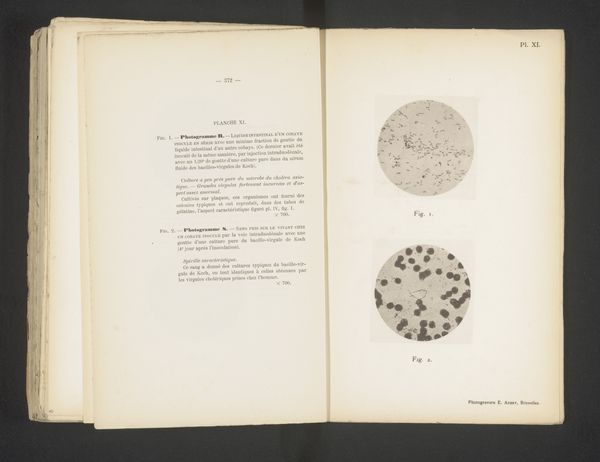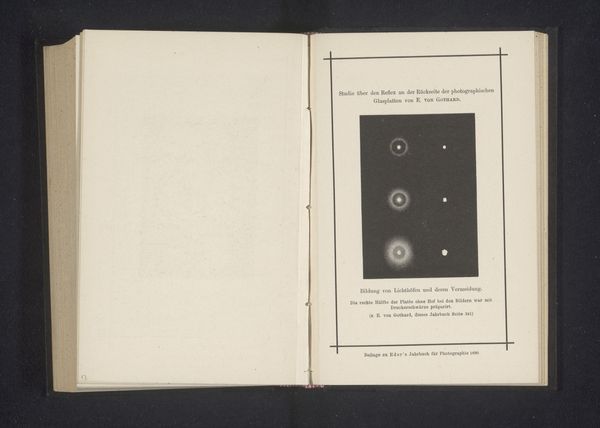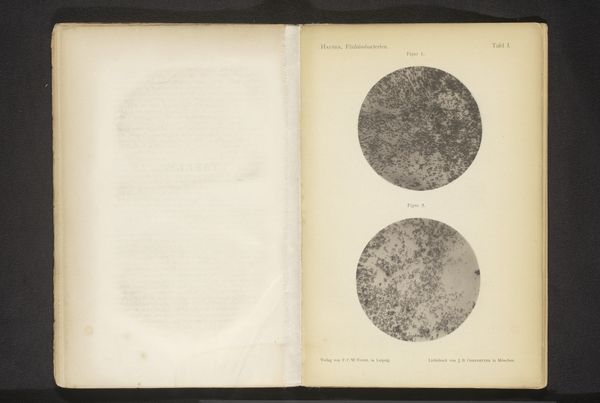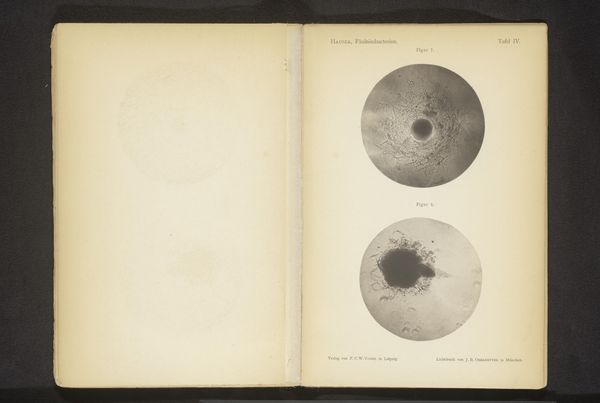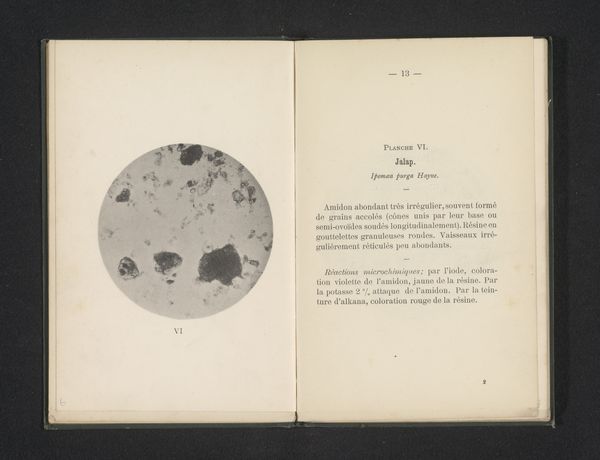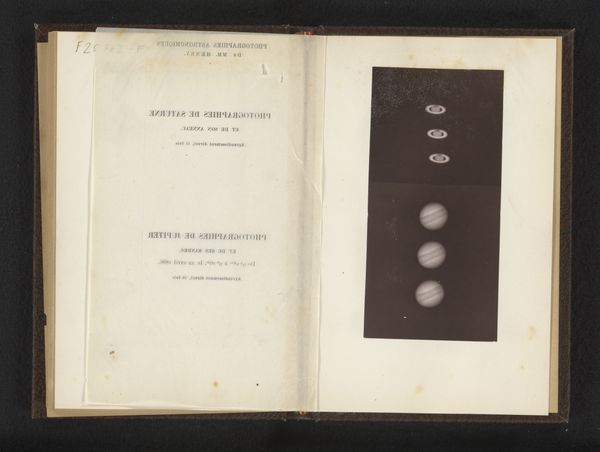
print, paper, photography
#
medieval
# print
#
paper
#
photography
Dimensions: height 246 mm, width 158 mm
Copyright: Rijks Museum: Open Domain
Editor: Here we have “Twee microscoopopnamen van cholera,” which translates to "Two Microscopic Images of Cholera," made before 1885 by Émile van Ermengem, displayed as a print on paper. It’s stark, almost otherworldly. What’s your perspective on this, considering its historical context? Curator: It's striking how these early images tap into a deep-seated human fear of the unseen. We are drawn into what appears as a medieval conception of the plague, demons lurking unseen. These photographs weren’t merely scientific records; they became powerful symbols. Consider the circles—the petri dishes. Does that circular form carry a weight for you, connected as they are to cycles and to contagion? Editor: Yes, definitely. The circle does make me think of cycles. And the dark center in the second image, that looks like a void. Curator: Precisely! Early photography was often seen as a truthful medium, so an image like this, showcasing a deadly disease, would have had immense cultural and psychological weight. In our memory, these germs have become metaphors for invisible threats. Editor: So, even a seemingly objective scientific image can carry strong cultural connotations. I hadn't thought of it that way. Curator: Absolutely. It reflects the way scientific discoveries can become potent symbols, deeply intertwined with societal fears and understandings. Consider how the image might be re-interpreted during the recent COVID-19 pandemic? Editor: That's fascinating. It definitely gives me a new perspective on how images function within a broader cultural landscape. Curator: Indeed. The emotional charge hasn't vanished with the passage of time. The symbols only shifted to incorporate the changing human drama of life versus death.
Comments
No comments
Be the first to comment and join the conversation on the ultimate creative platform.

